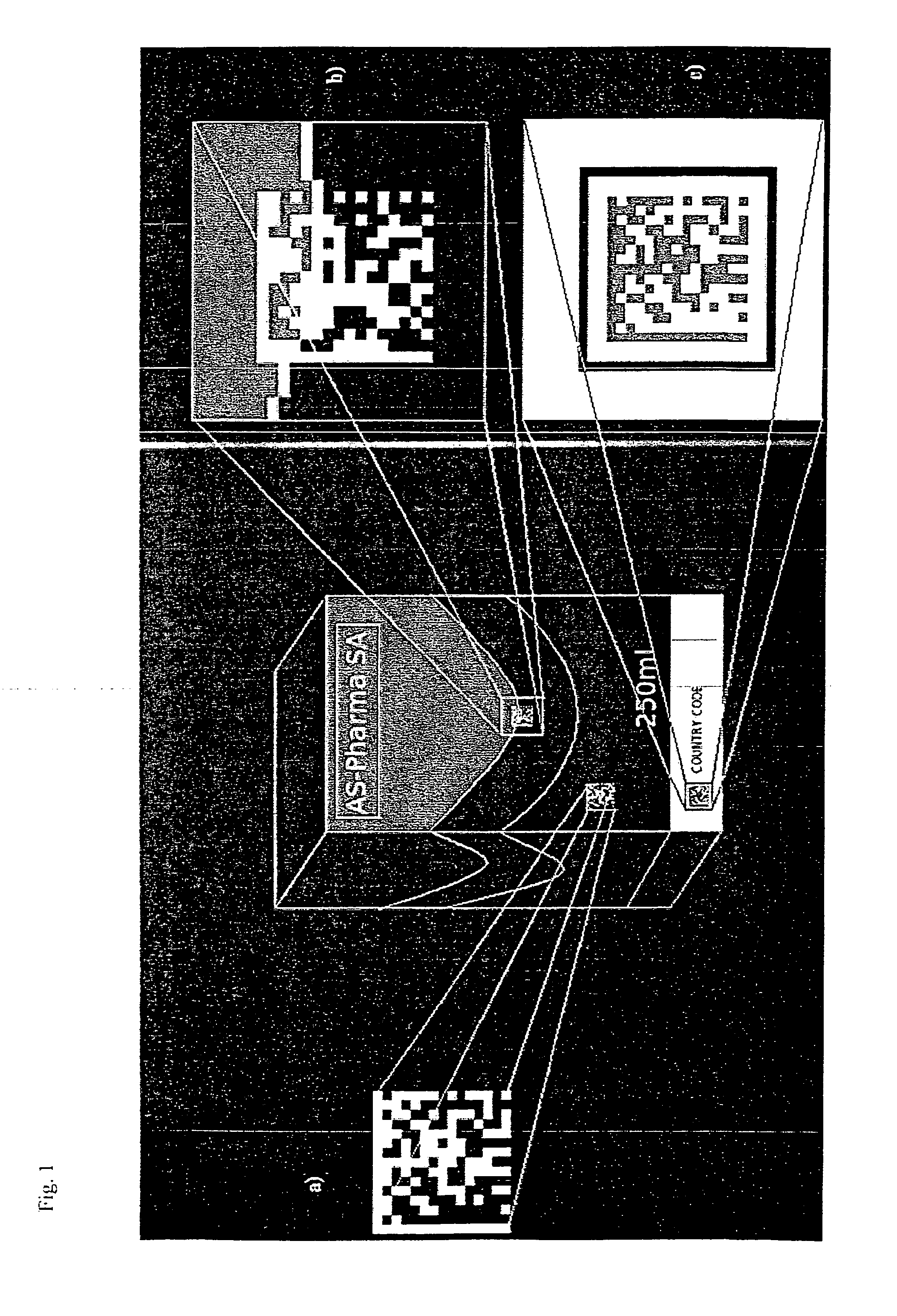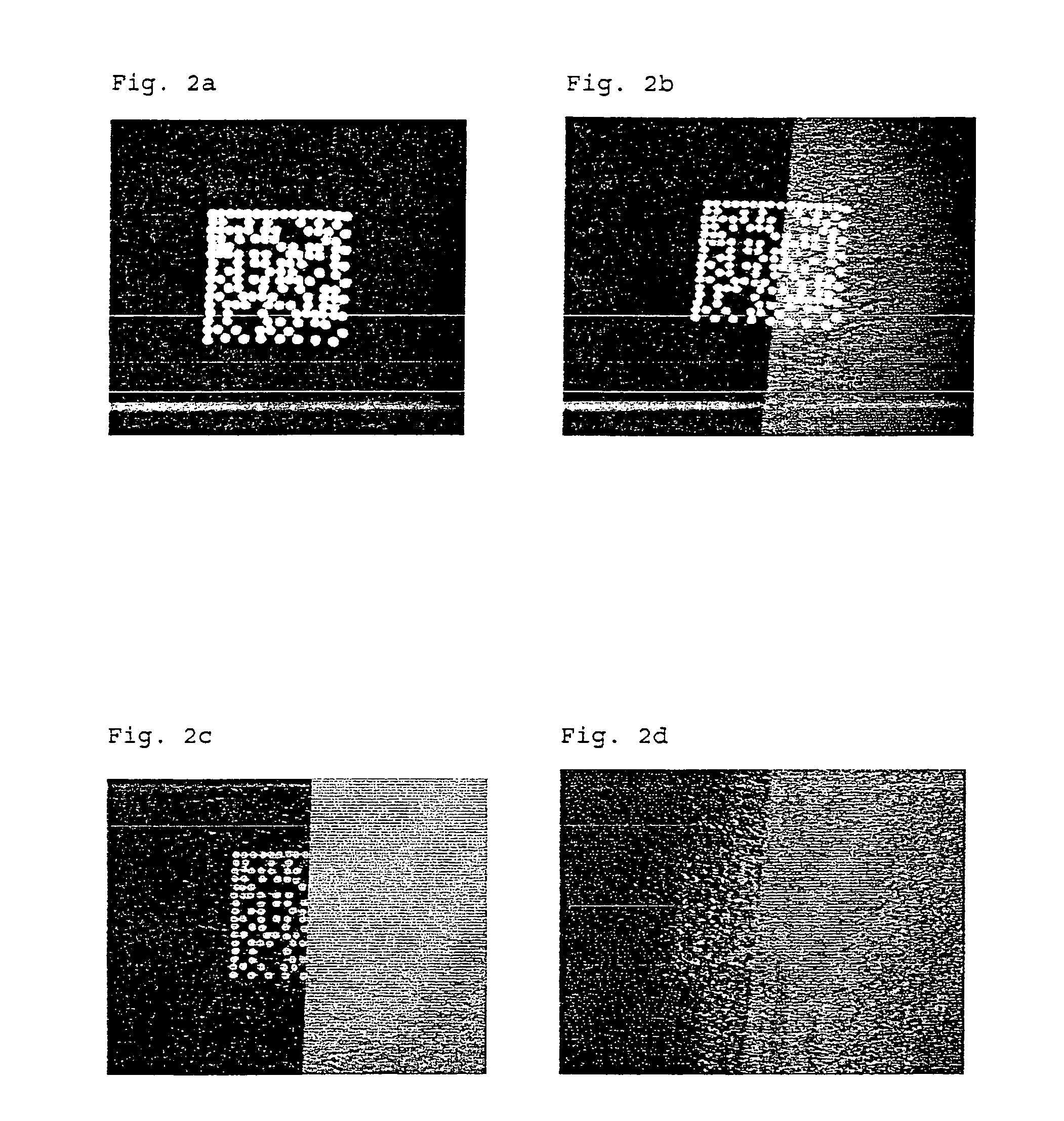Identification and authentication using liquid crystal material markings
a liquid crystal material and identification technology, applied in the direction of identification means, instruments, seals, etc., can solve the problems of counterfeit or diverted products, easy introduction into the supply chain,
- Summary
- Abstract
- Description
- Claims
- Application Information
AI Technical Summary
Benefits of technology
Problems solved by technology
Method used
Image
Examples
first embodiment
[0089]In a first embodiment, the marking of the present invention is made of a liquid crystal precursor material, which is applied in a liquid state to the surface of a substrate, and thereupon polymerized (cured) in the ordered liquid crystal state by irradiation with UV light or with electron beam radiation, as known by the skilled in the art.
[0090]The liquid crystal material applied in this embodiment is thus a monomeric or oligomeric precursor of a liquid crystal polymer. Said precursor comprises at least one nematic liquid crystal monomer or oligomer, said monomer or oligomer having polymerizable groups. Suitable nematic liquid crystal monomers or oligomers are from the group of bisacrylates such as[0091]benzoic acid 4-[4-[(1-oxo-2-propenyl)oxy] butoxy]-1,4-phenylene ester,[0092]benzoic acid 4-[4-[(1-oxo-2-propenyl)oxy] butoxy]-, 2-methyl-1,4-phenylene ester,[0093]benzoic acid 4-[4-[(1-oxo-2-propenyl)oxy] hexoxy]-, 2-methyl-1, 4-phenylene ester,[0094]benzoic acid 4-[4-[(1-oxo-2...
second embodiment
[0148]In a second embodiment, the marking of the present invention consists of pigment flakes of a liquid crystal polymer; said pigment flakes being comprised in a coating composition, applied to the surface of a substrate.
[0149]A preferred liquid crystal polymer pigment is of the type described in WO 2008 / 000755 A1, which is included by reference herein. A marking according to the present invention comprising such a pigment exhibits at least two reflection bands in the 200 nm to 2500 nm wavelength range.
[0150]Cholesteric liquid crystal polymer (CLCP) pigments useful to carry out the present invention are disclosed in EP 1 213 338 B1; EP 0 685 749 B1; DE 199 22 158 A1; EP 0 601 483 A1; DE 44 18 490 A1; EP 0 887 398 B1, and WO2006 / 063926. Reference is also made to U.S. Pat. No. 5,211,877, to U.S. Pat. No. 5,362,315 and to U.S. Pat. No. 6,423,246. Such particles have a thickness of the order of 1 to 10 micrometers and a flake size of the order of 10 to 100 micrometers, and are obtaine...
PUM
| Property | Measurement | Unit |
|---|---|---|
| wavelength range | aaaaa | aaaaa |
| wavelength range | aaaaa | aaaaa |
| wavelength range | aaaaa | aaaaa |
Abstract
Description
Claims
Application Information
 Login to View More
Login to View More - R&D
- Intellectual Property
- Life Sciences
- Materials
- Tech Scout
- Unparalleled Data Quality
- Higher Quality Content
- 60% Fewer Hallucinations
Browse by: Latest US Patents, China's latest patents, Technical Efficacy Thesaurus, Application Domain, Technology Topic, Popular Technical Reports.
© 2025 PatSnap. All rights reserved.Legal|Privacy policy|Modern Slavery Act Transparency Statement|Sitemap|About US| Contact US: help@patsnap.com


